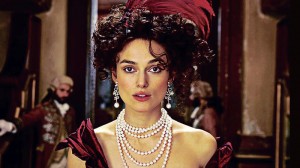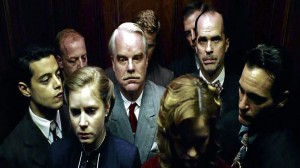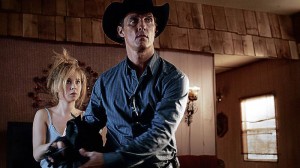(Conclusion)
Through the years, it has become easier to predict Oscar winners. Just make a tally of poll results, reports from betting agencies, and the outcome of earlier awards—the nominees with the most wins almost always proceed to grab the Oscar, dark horses excepting.
The Academy of Motion Picture Arts and Sciences has ignored works by some major directors this year: William Friedkin’s “Killer Joe,” Oliver Stone’s “Savages,” Woody Allen’s “To Rome with Love,” Christopher Nolan’s “The Dark Knight Rises,” Lasse Hallström’s “Salmon Fishing in the Yemen,” Gus Van Sant’s “Promised Land,” Spike Lee’s “Red Hook Summer,” Ken Loach’s “Angels’ Share” and Richard Linklater’s “Bernie.”
Considered for other categories but snubbed for Best Picture are: Paul Thomas Anderson’s “The Master,” Joe Wright’s “Anna Karenina,” Wes Anderson’s “Moonrise Kingdom” and Juan Antonio Bayona’s “The Impossible.”
In “The Impossible,” “family values” isn’t just motherhood statement, and spiritual uplift is an honest emotion.
“Anna Karenina” sends the viewer reeling from scene to scene (mind the segueing of sequences, the scythe strokes of peasants, but especially the grand ball). Scripted by Tom Stoppard, it has been called “a triumph of art and artifice over the grubby banalities of film naturalism.”
“Moonrise Kingdom,” a typically droll Wes Anderson concoction, is one of last year’s most exhilarating movies and certainly the prettiest.
“The Master,” partly based on the Church of Scientology and its founder, is masterful in everything, from screenplay to performance to production design. Its impact is quiet, yet one can sense when a film approaches greatness.
Any of these could replace “Beasts of the Southern Wild,” “Silver Linings Playbook” and “Les Misérables” in the race.
Musical, metaphysical
An overwhelmed critic described “Beasts of the Southern Wild,” the indie darling inspired by events in the wake of the 2005 Hurricane Katrina in the Gulf Coast, as being “of biblical proportions.”
(After watching it, we could only smile. In “The Impossible,” Bayona’s staging of the tsunami that killed a quarter of a million people in 2004—a 10-minute sequence—reportedly took six F/X companies one year to render. That is “biblical proportions.”)
From what we’ve learned about people living above the levee in New Orleans, life in this wet delta is paradisiacal. In the movie, all the characters are broadly depicted and the gnomic dialogue tries to be witty. Most confounding, in a voiceover throughout, the feral child philosophizes about life and the nature of the universe (wow!).
Zeitlin made it for under $2 million (it does look cheap). It’s a messy movie, just a novelty and somewhat overrated—but it is the underdog.
“Les Misérables” has expensive taste. Based on a hit musical, with A-list actors and outstanding production values, it is an elaborate movie with good intentions (student uprising, Christian martyrdom; exposé of injustice in the penal system and rottenness of class-structured society).
Most of the cast have functional voices. Implausibly, the movie will be forever marked for the performance of Russell Crowe as that archetypal martinet, Inspector Javert. We knew that Crowe used to sing in a rock band, so before watching the movie we were predisposed to excuse him for his vocal limitation. But it is just too distracting. Maybe if the songs weren’t recorded live, as the director insisted, they could have been engineered. It’s easier to imagine Tom Cruise in the rollicking role of a rock icon than “Gladiator” doing Broadway.
Romance and adventure
There are proper ways to film opera or Broadway. Successful staging would include Rob Marshall’s “Chicago”; Stanley Donen’s “Seven Brides for Seven Brothers” and “Singin’ in the Rain”; Norman Jewison’s “Fiddler on the Roof” and “Jesus Christ Superstar”; Bob Fosse’s “All That Jazz” and “Cabaret”; Robert Wise’s “West Side Story” and “The Sound of Music”; Joseph Mankiewicz’s “Guys and Dolls”; Jim Sharman’s “The Rocky Horror Picture Show”; Brian de Palma’s “Phantom of the Paradise”; Randal Kleiser’s “Grease”; Carol Reed’s “Oliver!”
Franco Zeffirelli did it in “La Traviata” and “Otello.” So did Lars von Trier in “Dancer in the Dark” and Jacques Demy in “The Umbrellas of Cherbourg.”
In those movies, we get so caught up in the web of the plot, camera work and character projection, that we watch the scenes and don’t realize the characters are singing or dancing.
It is against such movies that “Les Misérables” should be judged: Does it soar, falter or fall?
Maybe Hooper isn’t ready for that level of discipline. His relentless close-ups have only bloated the sentiments so that the actors, with all that warbling, come off over-emoting.
On the other hand, Wright’s version of “Anna Karenina” is even more visually cinematic, though mostly staged in an 18th-century theater, and more fluidly musical, though not even a musical. Bergman’s film of “The Magic Flute,” despite the merciless close-ups, is an unqualified triumph.
“Silver Linings Playbook,” about the love affair of a pair of social misfits, has been described as “an off-beat hybrid of indie drama and mainstream rom-com.” With an obsessive-compulsive father, a bipolar son and a black widow, we’re put on edge with their every scene together, anticipating explosive displays of emotion. Coming from the director of “Three Kings” and “The Fighter,” however, this film about second chances comes off as treacly sweet.
“Life of Pi,” about a boy trapped with a hungry tiger on a lifeboat adrift in the Pacific, is a gorgeous example of fabulism. The cinematography beggars description. “Magic realist” has grown stale from overuse but for this film’s entrancing visuals, the phrase is so right—just as phantasmagoric as, yet looking even more realistic than, “Avatar’s.”
We haven’t heard a bad word about this movie, so it could be the dark horse. But for a film that tries to reconcile the great religions (Christianity, Islam, Hinduism), it curiously exudes a faux spirituality.
Historical pageant
“Lincoln” is a brilliant dramatization of political history, and we’re astonished by what we find. Scriptwriter Tony Kushner points out that he has demythologized the most beloved American president, depicting him as a puppeteer engaged in deception (even at risk of impeachment); prone to temperamental outbursts; not beyond bribery (in the form of patronage jobs); and delaying the Civil War as a political maneuver (at the cost of thousands of lives).
The lightning over the valley at the finale of John Ford’s “Young Mr. Lincoln” is here picked up by the rumbling in the dark at the opening credit sequence, so we’re primed for a blood-and-thunder melodrama. And melodrama it is, with such blood-curdling scenes as the marital confrontation between Lincoln and Mary; or the American flag vividly waving across the ashen battlefield.
At times it turns cartoonish, as in the congressional hearing and voting for the constitutional amendment for the abolition of slavery. Except for the major roles, the characters are caricatures, almost devoid of nuance.
The rhetoric is often cringe-inducing, from the Gettysburg Address recited by a black soldier at the beginning, to sections of the 13th Amendment cited by a black housekeeper toward the end.
Historical subject is supposed to have a distancing effect, yet Spielberg (in “Schindler’s List,” “Amistad,” “Saving Private Ryan,” and now this) still manages to wallow in sentiments. Kushner’s script may have held him in check, but he finds a way to swim through John Williams’ music and Janusz Kaminski’s cinematography.
There’s nothing wrong with sentiment except when it’s not right, as when it’s excessive. For Spielberg, it’s not enough that news of the assassination is broken during a performance of Gounod’s “Faust”; he has to pan and swoop up his camera to the president’s young boy emoting on the balcony, holding on to the balustrade like a mermaid clinging to a rock.
At one point we thought Spielberg would end his movie with another Fordian image, with Lincoln turning his back and moving on to disappear in the haze framed by a doorway (see “The Searchers”). But no, he won’t let up, he can’t call it a day until he has delivered his message about democracy and freedom, the goodness of America, and some such jingoism and antislavery oratory. (For a more cynical, often truthful view of America, see Andrew Dominik’s Tarantino-esque “Killing Them Softly.”)
Despite our misgivings, this movie could win for Spielberg the Best Director trophy.
Southern western
“Django Unchained” is one more Tarantino genre-bender, and only his eighth film—a revenge fantasy described as “an antebellum riff on the spaghetti western.” (That’s an encapsulation, but it can’t begin to describe this loopy take on the Abolition Movement.)
It is a mash-up of western, abolitionist spectacle, Teutonic legend and Greek myth, with the black gunslinger imbued with the attributes of Siegfried and Prometheus.
This is another of Tarantino’s wish fulfilments, of what should have happened in history. After tinkering with the Holocaust in “Inglourious Basterds,” he now tackles slavery—from German to American racism (with a role reversal for the German, from nasty Nazi to sympathetic bounty hunter).
As always, Tarantino upholds the legacy of the B-movie, this time the western of the ’60s and ’70s shot in Italy or Spain, and comes up with a remix of movies like “Django,” “Sabata,” “Son of a Gunfighter,” the “Trinity” spoofs, the early Clint Eastwood oaters, plus “Bonanza,” “Taxi Driver,” “Star Wars.”
He can slavishly mimic the template, down to the flame-red graphics of the credit sequence and the Ennio Morricone score. He even pays homage to the original Django, Franco Nero, who makes a “friendly appearance” in a brutal sequence of Mandingo fighting.
Tarantino constantly defies the allowable on screen such that this film is often deliberately anachronistic, like its musical scoring, a hodgepodge of country and rap, Jim Croce and Verdi. Its liberal use of the “N” word, reportedly the biggest number in cinema history, may be era-appropriate but has triggered Spike Lee to accuse it of racism (thereby missing the point).
Everything about the film may seem rough-and-tumble, but just listen to Beethoven on harp; or watch the delicacy and preciseness in the setting of the dinner table in the plantation owner’s mansion—a perfect send-up of the legendary Southern hospitality and graciousness that would make Martha Stewart appear like a cowhand.
In contrast to Spielberg’s ponderous Abolition saga, this abolitionist rigmarole is great fun, if you’re a sadist, especially the orgy of slo-mo blood spill, heads blown off or hammered, particularly the penultimate bloodbath, or a nigger (filmmaker’s word, not ours) being torn apart by dogs. Tarantino stages these scenes with typical subversive glee, drawing from his audience that inchoate emotion between hilarity and horror.
This is basically an exploitation movie. While it indicts slavery, it also revels in sex and violence, which would make it hypocritical. But it is a fun movie, that is, it makes violence and revenge fun. It may not get the Best Picture but Tarantino should win Best Original Screenplay at least.
CIA thrillers
“Argo,” about the rescue of American-embassy employees during the 1979 Iran hostage crisis, is not the regular thriller for the brain-dead, yet as funny and heart-pounding just the same—and it’s a political film, too.
Its satirical thrust at Hollywood types hits the mark. The plot’s premise is wild, but, as the cliché goes, truth is stranger than fiction.
The snubbing of Ben Affleck for Best Director may yet get the film sympathy votes and boost its chances for Best Picture.
“Zero Dark Thirty” is thrilling investigative docu-drama, covering eight years of tracking down Bin Laden. (Title means “12:30 am,” or “half past midnight,” the time he was killed by SEAL Team 6 in a fortress compound in Abbottabad, Pakistan, in 2011, 10 years after 9/11.)
It is done in Bigelow’s trademark verite style. The cinematography swings between hand-held and formal framing of shots, the visuals ranging from gritty to burnished.
The horror of Central Intelligence Agency (CIA) torture for information is conjured in a few ferocious strokes, the scenes not overdone but very well encapsulating the gravity of the human rights issue involved. There’s no villain in this film. One might even feel some sympathy for the al-Qaeda leader when he is finally shot.
In hindsight, we know about those bombings on a London street, in an Islamabad hotel, at a CIA black site in Afghanistan. But in Bigelow’s staging, we’re lulled by the trajectory of the plot so that we’re still startled when the explosion comes.
As she and screenwriter Mark Boal have plotted every step of the way, the 30-minute raid is as breathless and fully sustained as “Argo’s” climactic sequence. Oddly, after the inevitable has happened, we get a sinking feeling instead of exhilaration.
Washington has decried the film’s portrayal of torture (also missing the point), a negative publicity that can certainly work against any movie vying for awards. Be that as it may, this is electrifying cinema.
Intimate drama
“Amour” is an unrelenting portrait of old age and the marginal existence of old people.
There have been only a handful of films that seriously deal with the subject: Mark Rydell’s “On Golden Pond”; De Sica’s “Umberto D”; Kurosawa’s “Ikiru”; Ozu’s “Tokyo Story”; Bergman’s final masterpiece, “Sarabande.” Mainstream filmmakers must have found the subject distasteful.
Haneke faces it head-on and comes up with this harrowing depiction of the decay of mind and body amid love that endures. (The polarity of the ephemeral and the imperishable, the physical and the spiritual, the temporal and the eternal, cannot be missed.) As its title flatly announces, it explores the subject of love and its various permutations through the life of an old couple.
As many definitions of love as there be people, there are three major types: agape (corresponding to Christian charity or compassion); platonic (spiritual affection, with no sexual implication); and erotic (earthly love, which is a pale reflection of divine love).
These still have countless variants, such as romantic or courtly love (as codified by Ovid, the Arthurian romances and the troubadours, in the veneration of the Virgin Mary). Christian theologians split the atom and even find nuclei, such as perfect love (unconditional) and imperfect love (selfish).
In Haneke’s intimate drama of devotion, the lovers are no longer “amorous” as we’ve come to know it. Here the man conducts himself in the rigorous Christian and chivalrous tradition, subjects himself to every caprice of his inamorata, and obsequiously serves her.
It seems the sole purpose of the lover is the happiness of the beloved. You would do anything, even sacrifice yourself, to make the one you love happy and not suffer. In other words, the lovers here have transcended earthly things, until it has become an ideal, spiritual love, beyond physical pleasure.
Haneke, one of the most respected European auteurs described as a “diagnostician of culture,” idolizes Bresson and Antonioni. Here he wields those filmmakers’ fragmented narration, refusal of identification with characters, minimalism of dialogue, austerity of performance, purity of visual composition, to come up with a film of such power, it is beyond words.
Final countdown
It has been noted that the Oscars is becoming more and more about popularity and not necessarily into cinematic excellence. For that, we’d rather turn to the National Society of Film Critics, which has higher standards of quality in film art, therefore, more credible choices.
The society has ranked as last year’s best films “Amour,” followed by “The Master,” then “Zero Dark Thirty.” The Academy has snubbed “The Master”; “Amour” seems a far shot; and “Zero Dark Thirty” is at risk of being edged out by the popular “Argo” and the populist “Lincoln.”
The extent of Hollywood mediocrity is such that, only last year, Lars von Trier’s “Melancholia” was totally snubbed (possibly because of the director’s Nazi comment) and Michel Hazanavicius’ “The Artist” trumped Terrence Malick’s “The Tree of Life.”
We predict that, in less than a decade, the overrated Hazanavicius movie will become a footnote in film history, while the landmark Malick and Von Trier films will go on to enter the canon of cinema.
So, whatever and whoever grab those trophies today, just take it with a grain of salt. It’s like, do we really believe that this year’s Miss Universe is the loveliest woman alive in the whole universe? Really, now.




